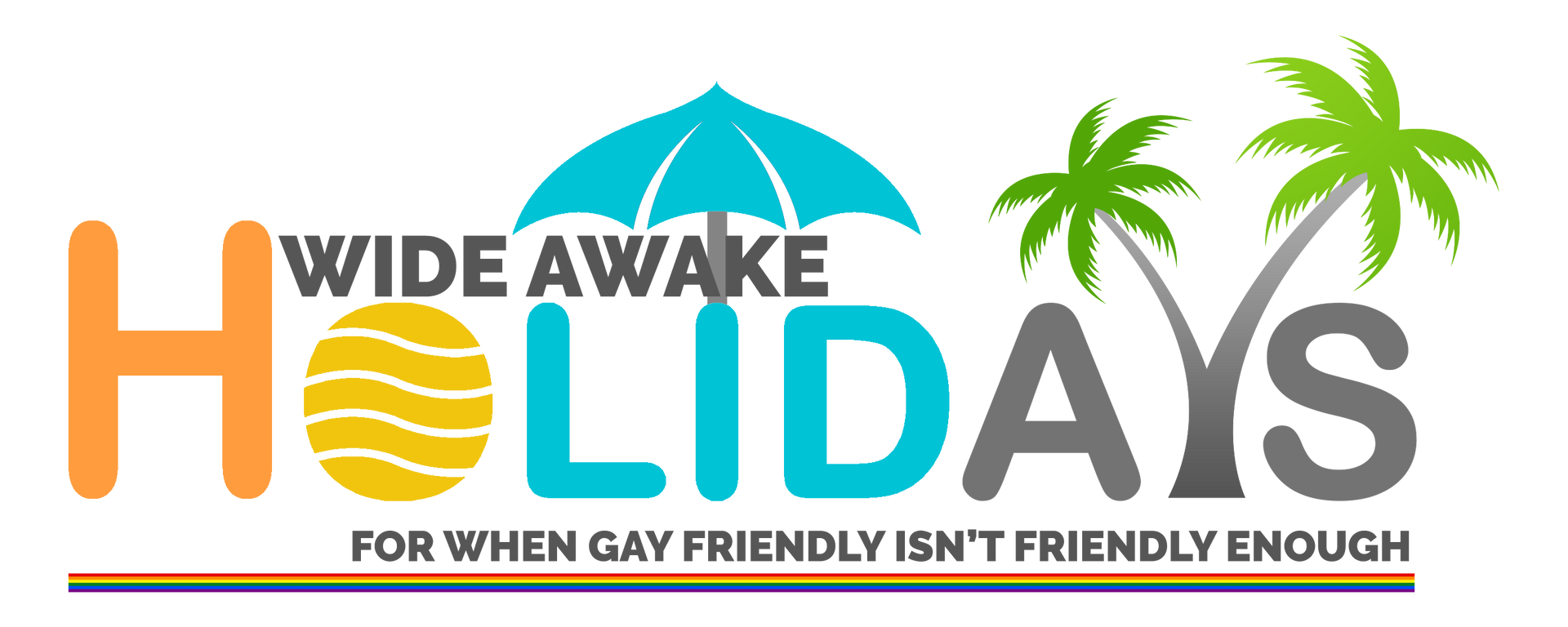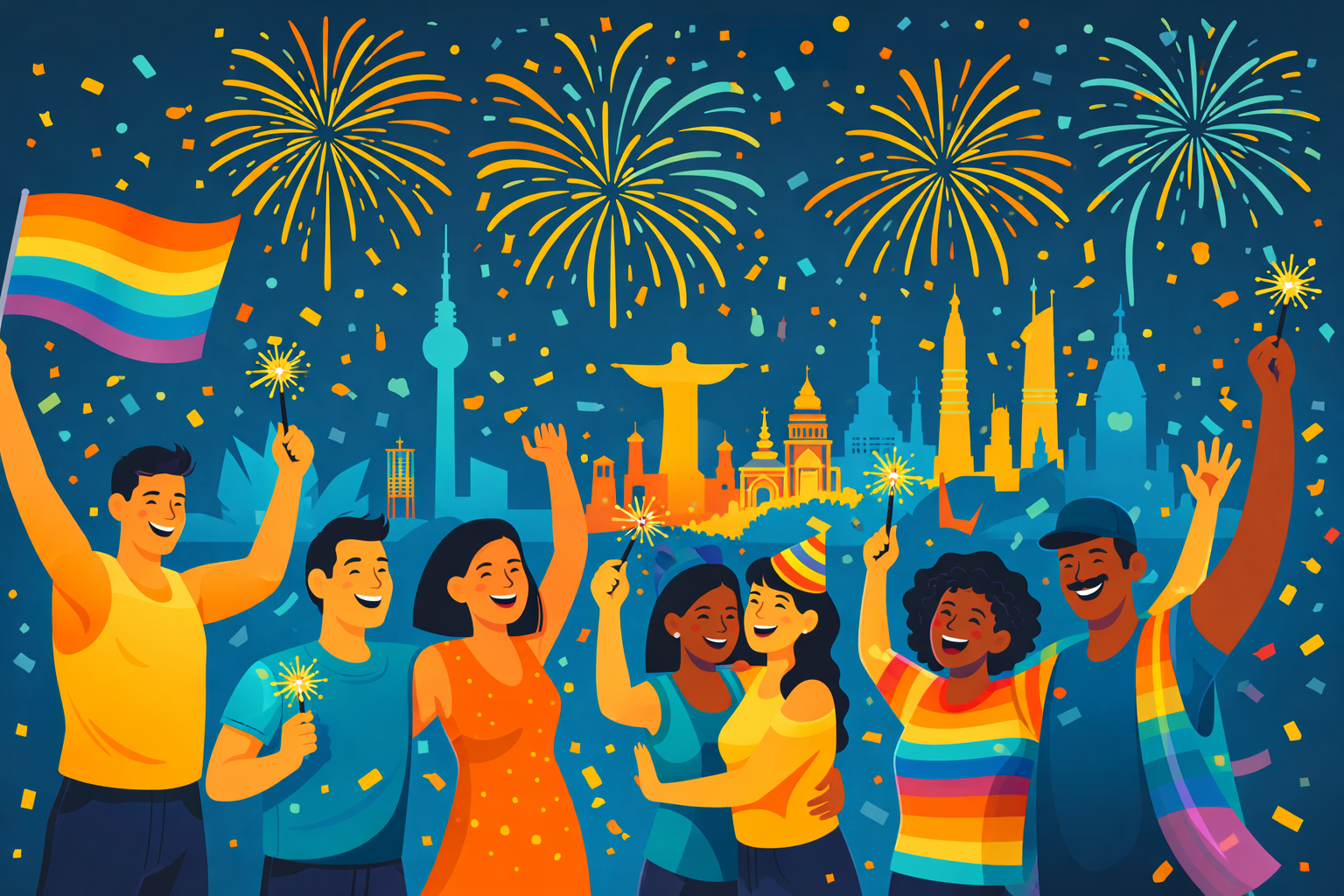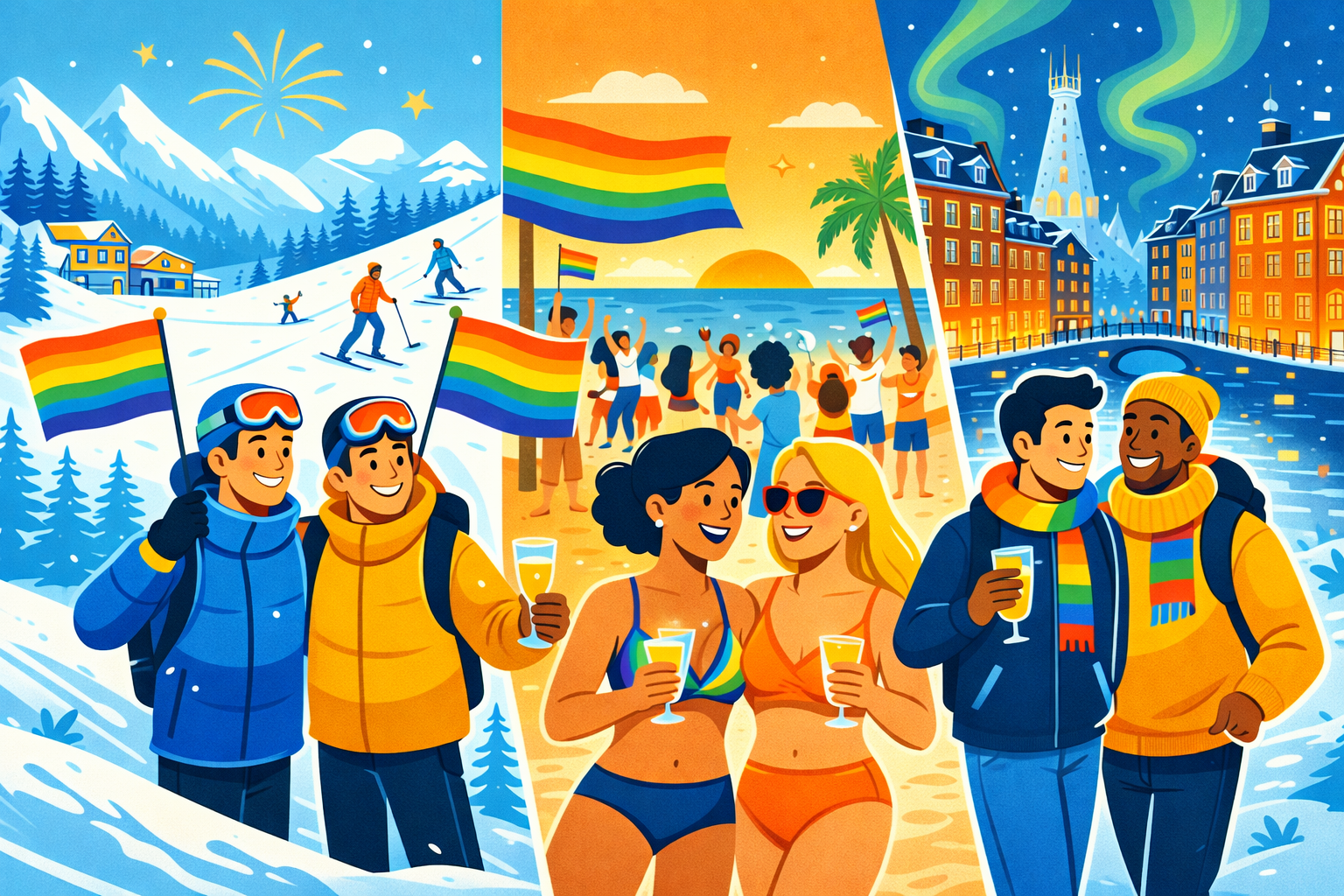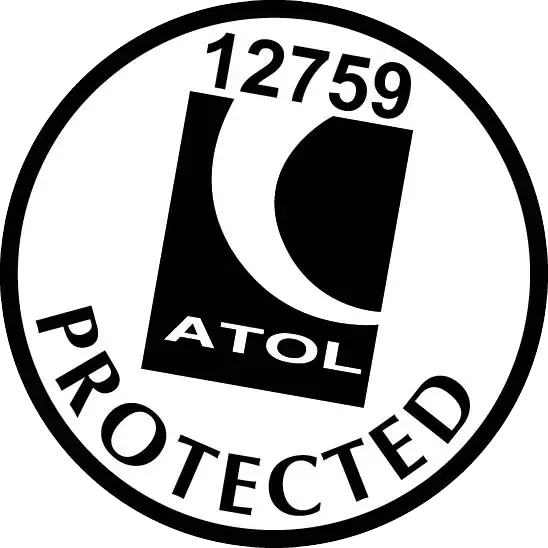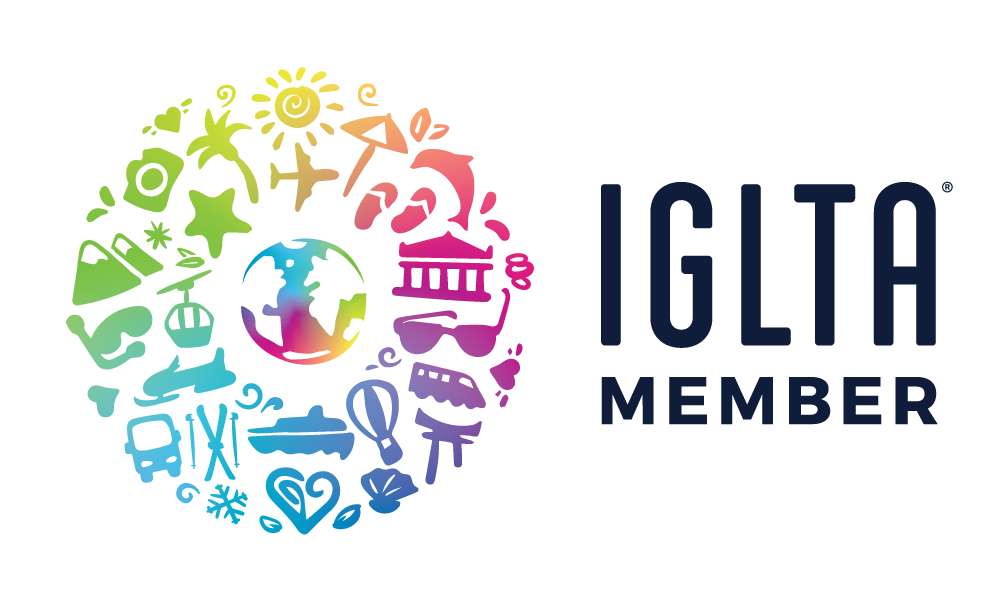Must-See LGBTQ+ Landmarks in Europe
Must-See LGBTQ+ Landmarks in Europe
Europe is a continent full of grand castles, soaring cathedrals, and ancient ruins. But hidden within its cities are places that tell another story — one of queer resilience, community, and pride. Visiting LGBT landmarks in Europe is more than sightseeing; it’s stepping into history written by those who refused to be invisible. These landmarks are places of remembrance, celebration, and identity.
For LGBTQ+ travellers, they’re also affirmations. Standing before them, you feel a deep connection with those who came before — activists, artists, and ordinary people who shaped a path to greater freedom. Whether it’s a memorial to lives lost, a museum showcasing queer creativity, or a square named after a trailblazer, each site holds meaning that reaches far beyond bricks or stone.
Why seek out these landmarks? Because travel isn’t only about landscapes or food. It’s also about understanding cultures, uncovering hidden stories, and recognising where communities have carved space for themselves. Each visit sparks reflection: how far have we come, and what still lies ahead?
In this guide, we’ll explore five powerful landmarks across Europe that every queer traveller should experience. From Amsterdam’s canals to Paris’s lively streets, each stop offers something unique. Along the way, you’ll also find practical advice on safety, cultural context, and how to make the most of your journey.
Amsterdam’s Homomonument, Netherlands
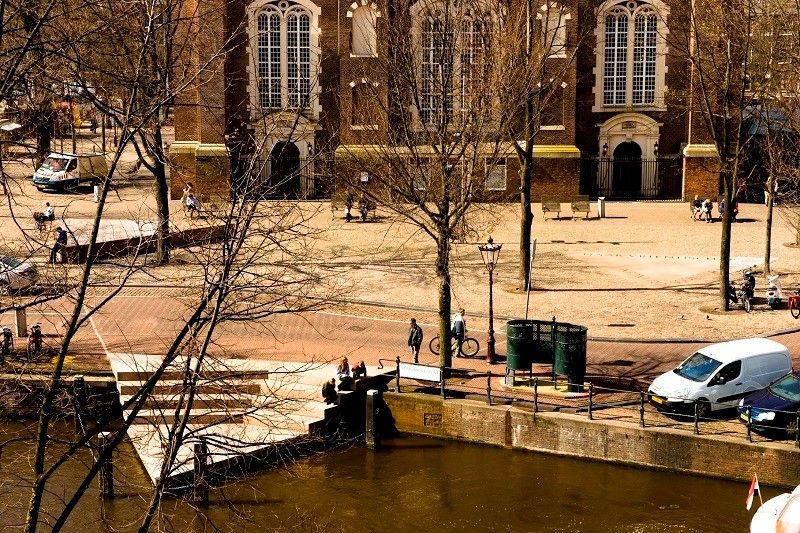
On the edge of a canal in central Amsterdam stands a striking pink granite memorial, known simply as the Homomonument. Unveiled in 1987, it was the first monument in the world dedicated to LGBTQ+ people who were persecuted and silenced. Its design is deeply symbolic: three large pink triangles forming one larger triangle. Each triangle points toward a place of meaning — the Anne Frank House, the National War Memorial, and the headquarters of COC Netherlands, one of the world’s oldest LGBTQ+ rights organisations.
Visitors often pause here in quiet reflection. The granite surface is cool under your hands, and the water of the canal laps nearby. The site is open day and night, and many travellers choose to visit at dusk, when the reflections of the city lights shimmer across the canal. It is a simple space, but it carries immense weight.
Why it matters
The Homomonument was groundbreaking. At a time when queer history was still widely ignored, Amsterdam made a statement: our stories belong in public. It doesn’t just remember the past — it insists on visibility in the present. Local activists still gather here for vigils, speeches, and events, keeping it alive as a working space of protest and pride.
Travel tips
- You’ll find the monument on the Keizersgracht canal, beside the Westerkerk church.
- It’s free to visit, and often included in LGBTQ+ walking tours.
- Consider visiting the Anne Frank House nearby for deeper historical context.
How gay-friendly is Amsterdam?
Amsterdam has a reputation as one of Europe’s safest and most welcoming destinations for LGBTQ+ travellers. Pride here is a city-wide celebration, with the famous canal parade attracting thousands. The city centre is dotted with queer bars, clubs, and cafés, and you’ll rarely feel out of place holding hands in public. For many, Amsterdam feels like a natural starting point when exploring LGBT landmarks in Europe.
Berlin’s Memorial to Homosexuals Persecuted Under Nazism, Germany
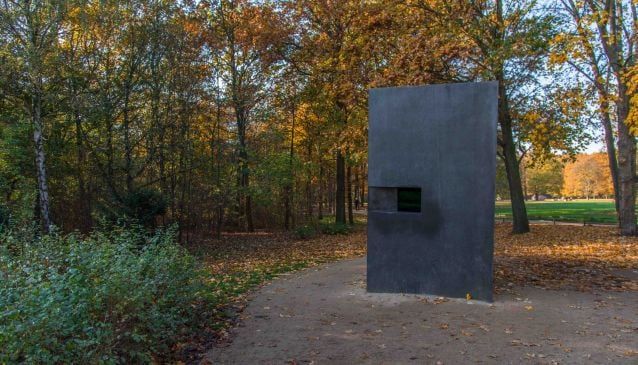
Berlin is a city of remembrance. Among its many memorials is one devoted to LGBTQ+ victims of the Nazi regime, who were imprisoned, tortured, and silenced under Paragraph 175, the law criminalising homosexuality. Opened in 2008, the memorial takes the form of a large grey concrete cube, set in the Tiergarten park, directly across from the Memorial to the Murdered Jews of Europe.
At first glance it seems solid, almost impenetrable. But on closer inspection you notice a small window cut into the stone. Peering through it, you see a film loop of two men kissing. The intimacy is startling against the severity of the structure. It is a reminder that love itself was once criminalised, and that survival was an act of defiance. While visiting the Tiergarten memorial, you might also enjoy exploring Berlin’s queer history further with nightlife, museums, and Pride events.
Why it matters
This memorial stands as both a tribute and a warning. By acknowledging queer suffering alongside other victims of Nazi persecution, it helps ensure these stories are never erased again. Its stark design confronts visitors with absence, but the film loop inserts presence back into that space.
Travel tips
- The memorial is open at all times, free to visit, and easy to find when walking through the Tiergarten.
- Nearby is the Schwules Museum, one of the world’s first museums dedicated to LGBTQ+ history and culture. Visiting both gives a fuller understanding of Berlin’s queer story.
- Combine the memorial with a guided LGBTQ+ walking tour of Schöneberg, once the hub of Weimar-era queer life.
How gay-friendly is Berlin?
Berlin has a vibrant queer identity stretching back over a century. Schöneberg remains its queer heart, with bars, clubs, and cafés that celebrate diversity every night of the week. Kreuzberg and Neukölln also have inclusive scenes, often blending queer culture with art and politics. Public displays of affection are generally safe here, and the city has strong protections for LGBTQ+ residents and travellers alike. For many, Berlin is the cultural capital of queer Europe.
Cologne’s Memorial to Gay and Lesbian Victims of National Socialism, Germany
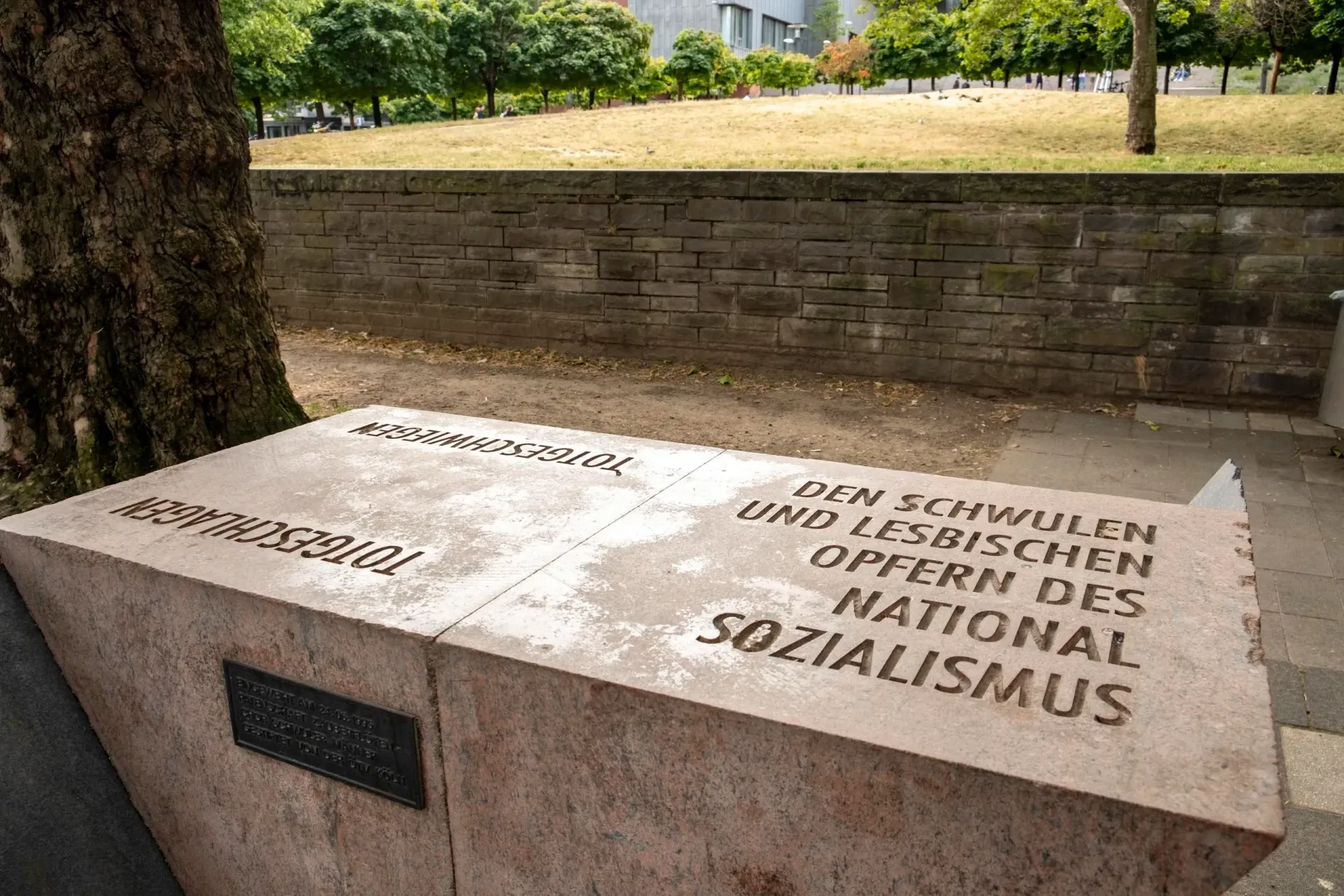
Cologne is famous for its towering cathedral and riverside views, but it also holds one of Europe’s most moving LGBTQ+ memorials. On the Rhine Promenade, close to the Hohenzollern Bridge, stands the Memorial to Gay and Lesbian Victims of National Socialism, unveiled in 1995.
The memorial is shaped in part like a pink triangle, the symbol once forced upon gay men in concentration camps. Its granite design is simple, but its location is profoundly symbolic. The bridge nearby was a traditional meeting spot for gay men before and after the war — a place of both risk and connection.
Why it matters
This memorial not only acknowledges history but also reclaims public space. By installing it at the very site where queer people once gathered in secret, Cologne honours resilience and survival. It sends a clear message that the community belongs here openly, without fear.
Travel tips
- The memorial is freely accessible at all hours.
- It’s a short walk from Cologne’s cathedral, making it easy to include in a day’s sightseeing.
- Local LGBTQ+ organisations often host events here during Cologne Pride (CSD).
How gay-friendly is Cologne?
Cologne is one of Germany’s most welcoming cities for LGBTQ+ travellers. Its Pride celebration is among the largest in Europe, drawing over a million visitors each year. The city has a lively queer nightlife scene and an open, inclusive culture. Holding hands or being visibly queer in public is generally accepted. For travellers, Cologne offers both history and a joyful present.
Frankfurt’s Angel Memorial, Germany
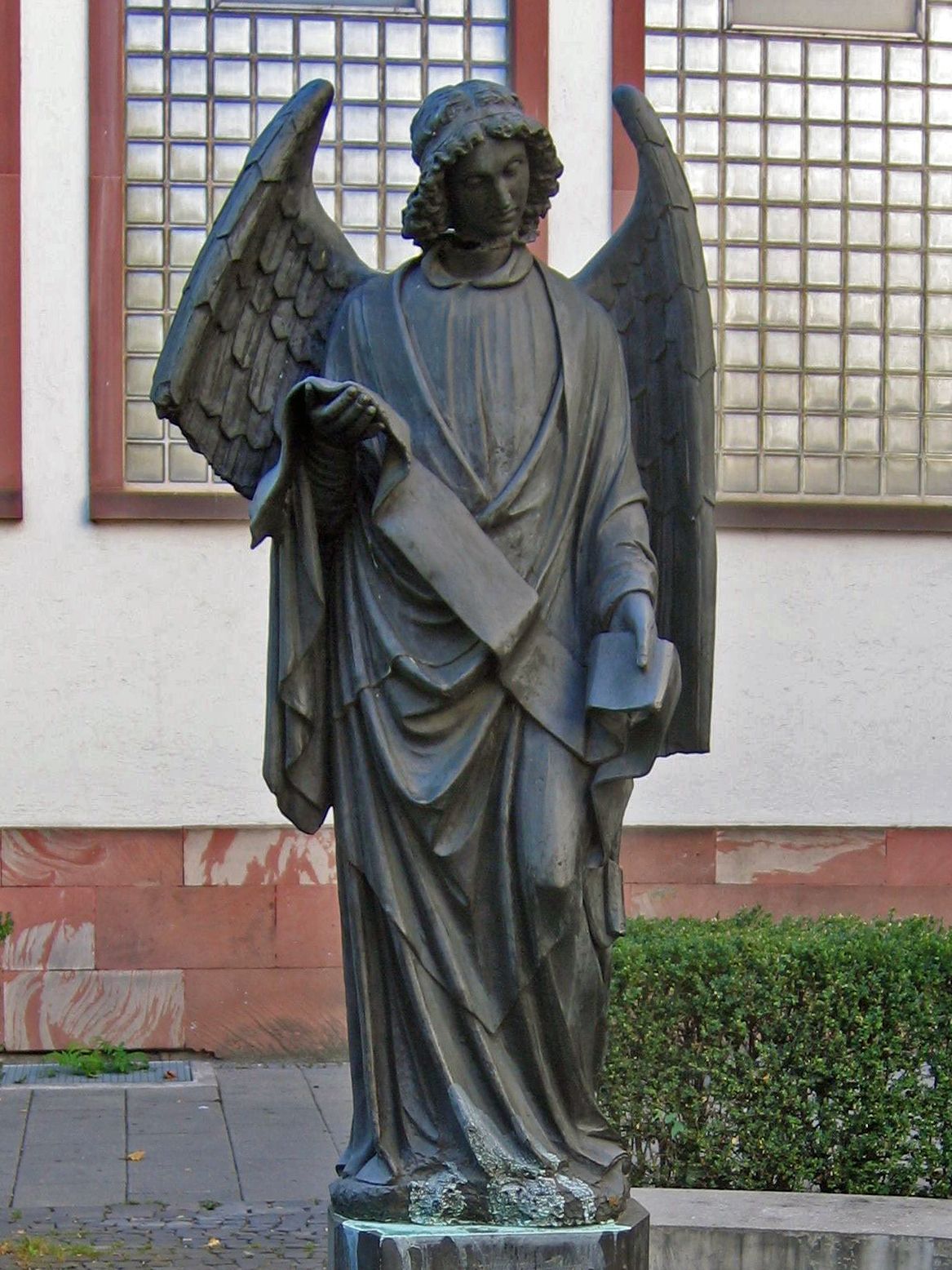
In the heart of Frankfurt stands a sculpture known as the Frankfurter Engel, or “Frankfurt Angel.” Installed in 1994, it was one of Germany’s first memorials to homosexual victims of Nazi persecution. But it doesn’t stop there — it also honours those affected by anti-LGBTQ+ laws that remained in place in Germany long after the war, such as Paragraph 175, which wasn’t fully repealed until 1994.
The statue depicts an angel with bowed head and outstretched wings. It stands quietly at a crossroads, where thousands of people pass by every day. A plaque explains its dedication, ensuring that history is visible to anyone who pauses to read.
Why it matters
The angel serves as both a memorial and a guardian. By acknowledging persecution beyond the Nazi era, it expands the narrative and recognises the struggles that continued well into the late 20th century. It’s a sobering reminder that equality is recent — and fragile.
Travel tips
- The memorial is located in Klaus-Mann-Platz, near the city centre.
- It’s public, free to visit, and accessible at any time.
- Consider pairing it with a visit to Frankfurt’s museums, many of which engage with themes of memory and identity.
How gay-friendly is Frankfurt?
Frankfurt may be known primarily as a business hub, but it also has a welcoming queer side. The city’s Pride, known as Christopher Street Day (CSD Frankfurt), is celebrated every July. While smaller than Cologne’s, it still draws thousands. The local LGBTQ+ scene is concentrated around Alte Gasse, where bars and cafés create a friendly neighbourhood atmosphere. For queer travellers, Frankfurt is a safe and comfortable city with plenty of cultural depth.
Paris’s Place Harvey Milk and LGBTQ+ Memorials, France
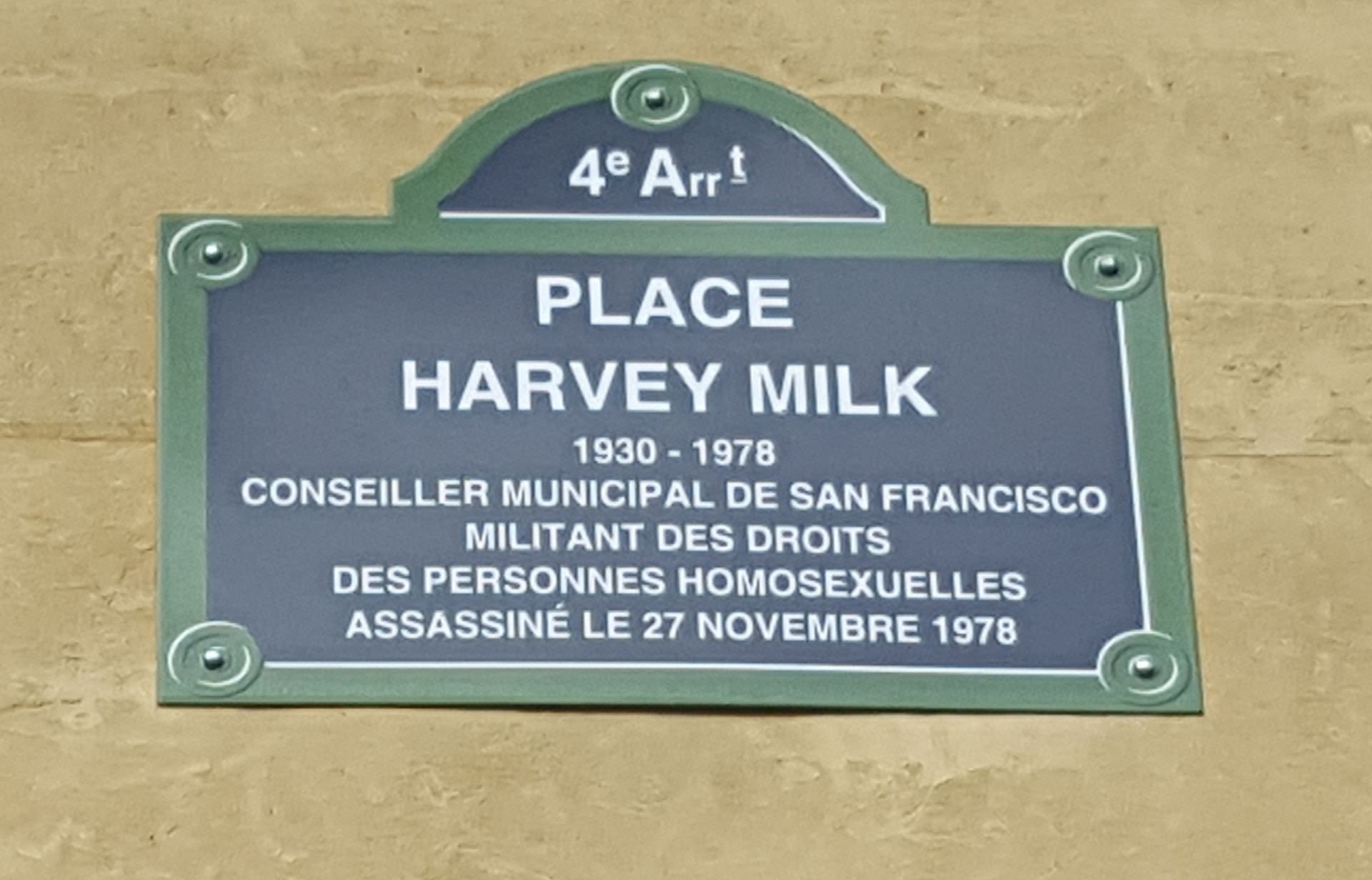
Paris has long been a stage for revolution, romance, and reinvention. For LGBTQ+ travellers, the French capital also offers landmarks that affirm queer history right in the heart of the city. Chief among them is the Place Harvey Milk, a public square in the Marais district named in honour of the American activist and politician. Inaugurated in 2019, it became one of the first public spaces in France to carry the name of a gay rights pioneer.
The location is symbolic. The Marais has been the beating heart of queer Paris for decades, with rainbow flags fluttering above lively bars, chic boutiques, and cosy cafés. Standing in Place Harvey Milk, you’re surrounded by streets that have long been safe havens for queer life. It feels both local and international — Paris honouring a figure from San Francisco, weaving his legacy into the fabric of its own queer community.
Nearby, another significant site adds depth to the story: the Place des Émeutes-de-Stonewall, named in recognition of the 1969 Stonewall riots in New York that ignited the modern LGBTQ+ rights movement. Paris has also recently inaugurated a memorial near the Bastille, dedicated to LGBTQ+ victims of Nazi persecution and other historic injustices. Together, these spaces form a patchwork of remembrance, solidarity, and pride.
Why it matters
Paris’s decision to name public squares after Harvey Milk and Stonewall speaks volumes. It shows solidarity with global queer struggles and acknowledges that LGBTQ+ rights are part of universal human rights. For visitors, these squares are not just photo opportunities — they’re moments to reflect on how interconnected our histories truly are.
Travel tips
- Place Harvey Milk is located at the junction of Rue des Archives and Rue de la Verrerie in Le Marais. It’s easy to reach by metro and perfectly placed for a walking tour of the district.
- Combine your visit with stops at queer bookshops, fashion boutiques, and iconic bars like Les Souffleurs or Le Duplex.
- If visiting in June, don’t miss Paris Pride, which winds through the city in a riot of colour and music.
How gay-friendly is Paris?
Paris is widely considered an LGBTQ+ friendly city. Le Marais is one of Europe’s most vibrant gay districts, alive day and night with events and venues catering to the community. Public acceptance is generally high, and same-sex couples will find it comfortable to travel openly. That said, like any major city, experiences can vary — but for most queer visitors, Paris feels celebratory and safe.
Beyond the Landmarks: Experiencing Queer Europe
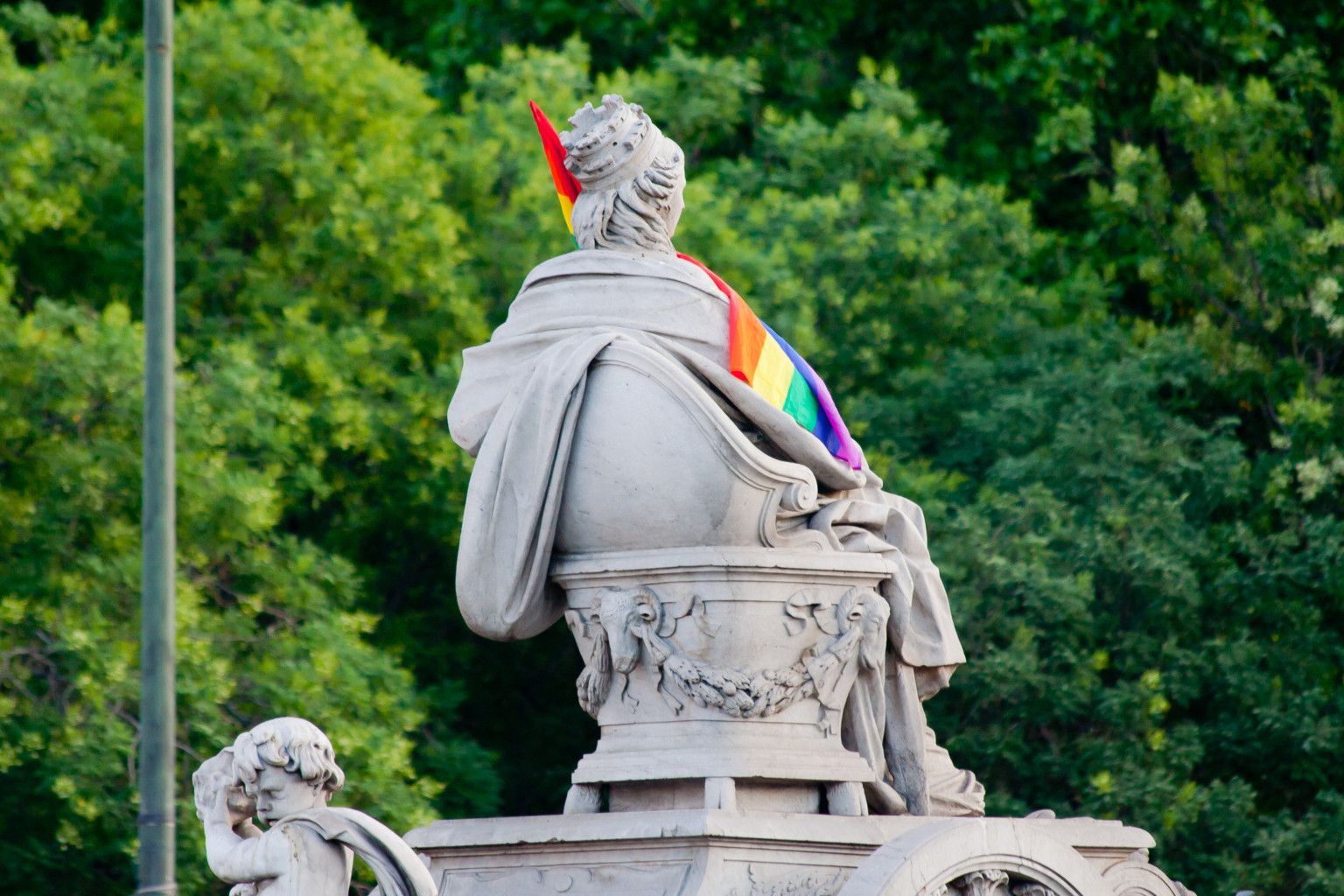
Exploring LGBT landmarks in Europe is about more than ticking places off a list. Each site connects you to a bigger narrative of struggle, courage, and resilience. But the experience doesn’t stop at the memorial itself. It extends into neighbourhoods, museums, and local communities that surround them.
In Amsterdam, after reflecting at the Homomonument, you might wander into the bookshop Vrolijk, packed with queer literature from across the globe. In Berlin, a walk from the memorial in Tiergarten could lead you into lgbt , where cafés spill onto pavements once frequented by Christopher Isherwood and Marlene Dietrich. Cologne’s riverside memorial flows into a night out in Rudolfplatz, where rainbow lights glow above friendly bars. And in Paris, a stroll through Le Marais turns remembrance into celebration, with drag shows, queer art exhibitions, and lively terraces.
Each landmark is an anchor, but the surrounding life is what transforms a visit into a memory. You’re not just learning about history — you’re living inside a culture that continues to grow, evolve, and inspire.
Planning Your Journey Around LGBT Landmarks in Europe
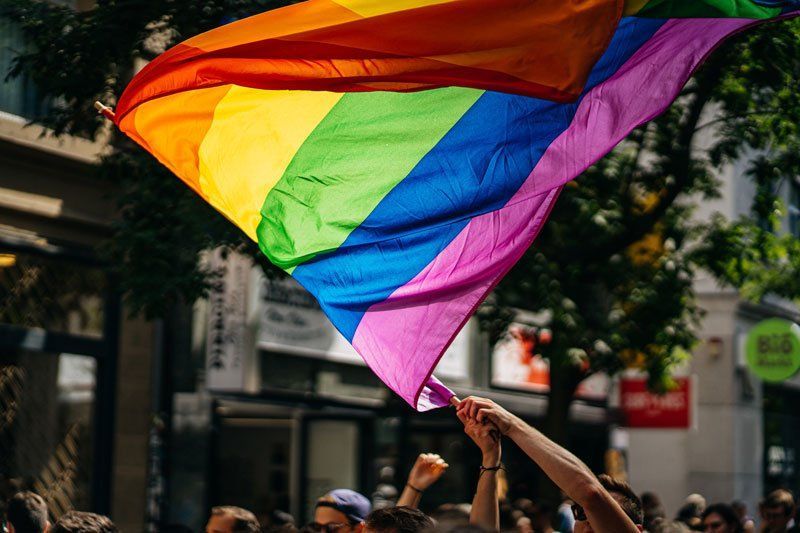
One of the joys of Europe is how easy it is to move between major cities. High-speed trains, short flights, and well-connected bus routes mean you can design an itinerary that takes you from one landmark to the next without wasting precious time.
For LGBTQ+ travellers, that connectivity makes it possible to weave queer history into a holiday that also includes art galleries, nightlife, and food experiences. The result is a trip that feels purposeful and unforgettable.
Amsterdam + Berlin: A perfect pairing
Start your journey in Amsterdam, reflecting at the Homomonument before diving into the city’s vibrant canal-side culture. From there, a quick flight or train ride gets you to Berlin in under seven hours. Berlin offers both solemn reflection at the Memorial to Homosexuals Persecuted Under Nazism and celebratory nights out in Schöneberg. The contrast makes this pairing powerful: remembrance by day, liberation by night.
Cologne + Frankfurt: A Rhine connection
If you’re exploring Germany further, Cologne and Frankfurt are just an hour apart by train. Visiting both gives you a deeper understanding of how Germany remembers queer history across different cities. Cologne’s riverside memorial feels intimate, while Frankfurt’s Angel expands the narrative to modern legal struggles. In between, you can enjoy the Rhine valley’s castles and vineyards, adding natural beauty to your trip.
Paris: The international stop
Adding Paris to your itinerary brings a global perspective. With its squares dedicated to Harvey Milk and Stonewall, Paris shows how European cities are connected to international queer movements. Plus, Le Marais offers some of the best LGBTQ+ nightlife and cultural experiences in Europe.
Practical tips for planning
- Travel light: Moving between cities is easier with just a carry-on, especially on trains.
- Book central accommodation: Staying near queer districts like Amsterdam’s Reguliersdwarsstraat, Berlin’s Schöneberg, or Paris’s Marais keeps you close to both landmarks and nightlife.
- Join queer tours: Local guides bring stories alive in ways plaques can’t. They often know hidden spots and community insights.
- Check Pride dates: Aligning your trip with Pride events turns a holiday into a festival of colour and solidarity.
By planning with intention, you create a trip that is not just about seeing Europe, but experiencing it through the lens of queer resilience and joy.

Jamie Says:
"When we created Wide Awake Holidays, I knew we needed to highlight places that aren’t just pretty — but powerful. I’ll never forget standing in Paris’s Place Harvey Milk and seeing young couples holding hands without hesitation. It reminded me that travel is not just about where you go, but how those spaces allow you to be yourself.”
Jamie Wake, Managing Director
Why These Landmarks Matter for LGBTQ+ Travellers
Every traveller has their reasons for visiting Europe. Some chase food, others art, others architecture. But for LGBTQ+ travellers, the chance to stand at places where queer history is carved into public memory is uniquely meaningful.
These landmarks give visibility to people who were long denied it. They transform suffering into remembrance, silence into visibility, and absence into presence. For many visitors, they also offer something deeply personal: a sense of belonging in spaces that once rejected us.
Think about it: in the same city where gay men were once forced to wear pink triangles, you can now stand before a granite memorial in their honour. In a square where protests once broke out, you now find a rainbow flag fluttering above cafés filled with laughter. Each landmark is a reminder that progress, however slow, is real.
They also make travel more enriching. Instead of just seeing monuments to kings and emperors, you’re connecting with history that speaks directly to queer lives. It changes the way you look at a city — and yourself within it.
Travel with Confidence: Wide Awake Holidays Protections
Travelling as an LGBTQ+ person is about more than flights and hotels. It’s about knowing you’ll be safe, respected, and supported every step of the way. That’s why Wide Awake Holidays was founded: to create travel experiences where queer travellers never have to second-guess their comfort or security. For up-to-date information on LGBTQ+ rights across the continent, the ILGA-Europe Rainbow Map.
Your safety, our priority
We only partner with accommodation providers, guides, and tour operators who meet strict inclusivity standards. Every hotel we recommend is vetted not only for quality but also for LGBTQ+ friendliness. You’ll never be placed somewhere that doesn’t recognise your rights as a guest.
Financial protection
All bookings made through Wide Awake Holidays are covered by full ATOL protection, giving you the same security as major tour operators. If plans change, your money is safeguarded, and you’ll never be left stranded. Flexible cancellation policies add extra peace of mind, especially in uncertain times.
On-the-ground support
Every holiday includes 24/7 support. If you need help — whether it’s rerouting travel due to strikes or simply asking where the local queer-friendly cafés are — our team is one call away. We monitor destinations for political or cultural shifts, so you’ll always travel with the latest guidance.
Tailored to you
Not all LGBTQ+ travellers want the same thing. Some look for nightlife, others for quiet reflection, others for family-friendly experiences. We take the time to match your trip to your style, while always making sure inclusivity is built in.
Guidance on local laws
While most of Western Europe is safe and progressive, laws vary across the continent. Our team provides clear, practical advice on where public affection is celebrated, tolerated, or best expressed more discreetly. This ensures you can enjoy landmarks and cultural experiences with confidence.
Closing Thoughts
Travelling to LGBT landmarks in Europe is about connecting with stories of resilience, love, and progress that shape who we are today. Standing at these sites, you don’t just see history — you feel part of it. At Wide Awake Holidays, we believe every queer journey should be safe, meaningful, and tailored to you. Whether you want to pair solemn moments of remembrance with lively Pride celebrations, or discover hidden community spaces alongside iconic memorials, we’ll help design a holiday that gives you both freedom and connection. With our protections, trusted partners, and 24/7 support, you can focus on what matters: exploring, celebrating, and being fully yourself. If you’re ready to start planning your journey, get in touch with us today and let’s create a trip you’ll never forget.
Send an Enquiry:
We will get back to you as soon as possible.
Please try again later.
Frequently Asked Questions
What are the most famous LGBT landmarks in Europe?
Some of the most significant include Amsterdam’s Homomonument, Berlin’s Memorial to Homosexuals Persecuted Under Nazism, Cologne’s riverside memorial, Frankfurt’s Angel, and Paris’s Place Harvey Milk.
Why should I include LGBT landmarks in my trip?
They connect you with queer history and culture in a way that traditional tourist sites can’t. They make your travels more meaningful.
Are LGBT landmarks in Europe free to visit?
Most public memorials and squares are free. Museums may charge entry, but fees are usually modest and worth the experience.
Can I visit several LGBT landmarks on one trip?
Yes. Thanks to Europe’s excellent train and flight connections, you can combine Amsterdam, Berlin, Cologne, Frankfurt, and Paris in a single holiday.
Is it safe to be openly LGBTQ+ when visiting these landmarks?
In Western Europe, yes — it is generally safe to hold hands, take photos, and visit openly. Always check local context and current advice, but in these cities you’ll find welcoming communities.
When is the best time to visit LGBT landmarks in Europe?
Spring and autumn are ideal, with fewer crowds and pleasant weather. Summer brings Pride festivals, which add a celebratory atmosphere. Europe’s landmarks are powerful in summer, but you can also celebrate Pride all year round with events and destinations beyond June.
Do I need a guide to visit these landmarks?
Not always. Many are accessible on your own. But local LGBTQ+ guides bring history alive, sharing personal stories and hidden spots.
Are there LGBT landmarks outside major cities?
Most are in capitals or large cities, but smaller towns often have queer cultural sites, bars, or local memorials. Wide Awake Holidays can help you uncover them.
Can families with children visit these landmarks?
Absolutely. These are educational and cultural sites suitable for all ages. They teach history, respect, and diversity.
How do LGBT landmarks in Europe impact today’s queer rights?
By keeping memory visible, they ensure struggles aren’t forgotten. They inspire activism, visibility, and solidarity across generations.
Some of our Latest Offers
Discover our latest hand-picked travel offers below – automatically updated and inspired by the destinations featured in this blog.
